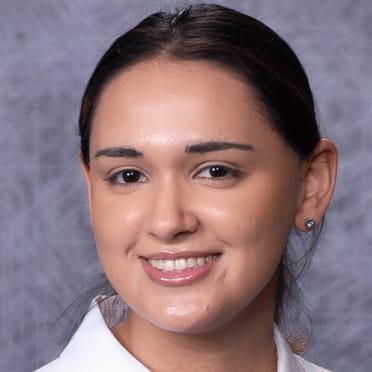We could call the Brewers the hottest team in baseball. We could, but even that would be an understatement.
All but forgotten amid the Cubs' hot start, the Brewers didn't permanently climb above .500 until late May, and on June 17, they were a season-worst 6 1/2 games out of first place. That was the point at which the tides turned in Milwaukee, and not two months later, the Brewers aren't just leading the NL Central -- they're the best team in baseball by record, and it's not close.
A tear like that all but requires a few sustained winning streaks, but the Brewers have taken it a step further. With a 7-1 victory over the Pirates on Aug. 11, the Crew won its 10th in a row ... again, because the Brewers' run had already featured a 10-game winning streak in July. The 2025 Brewers, as such, became the 10th team in the Divisional Era (since 1969) to put together multiple double-digit win streaks in the same season.
What the 2025 season has in store for the Brewers is still anyone's guess -- but what became of those previous nine clubs? Here's a look.
2025 Brewers
Streaks: July 6-21 (11 games); Aug. 1-11 (10 games)
At the time the Brewers recorded their second 10-game winning streak, they had a full five-game lead for the best record in the Majors. Suffice it to say, the 2025 Brewers squad was much better than anyone could have possibly anticipated. With a lockdown pitching staff, elite defense and speed and an above-average offense -- along with a flair for the dramatic -- Milwaukee had a knack for stringing together win streaks in bunches. The Brewers also had an eight-game winning streak from May 25 to June 2.
2019 Astros (107-55, lost WS)
Streaks: April 5-16 (10 games); May 8-18 (10 games)
This 2019 Astros club was truly loaded. Justin Verlander won his second of three career Cy Young Awards with a 2.58 ERA and 300 strikeouts in 223 innings. Gerrit Cole, his rotation mate, had a 2.50 ERA and 326 strikeouts and finished second behind Verlander in the voting. Alex Bregman had a career-best season with 41 home runs and an MLB-leading 8.3 Wins Above Replacement (FanGraphs). Factor in George Springer (39 home runs), Jose Altuve (31 home runs), Yordan Alvarez (27 home runs in 87 games as a rookie) and countless others, and it’s no surprise that Houston made it to Game 7 of the World Series, where the Astros lost to the Nationals.
2017 Dodgers (104-58, lost WS)
Streaks: June 16-25 (10 games); July 4-19 (11 games)
The 2017 Dodgers didn’t have the incredible wealth of star power that the current edition of the club features, but they were a powerhouse nonetheless. With Cody Bellinger smashing 39 home runs with a .933 OPS to win the NL Rookie of the Year Award, as well as reigning NL Rookie of the Year Corey Seager, Yasiel Puig and Justin Turner in the lineup, the offense was potent. Three-time Cy Young Award winner Clayton Kershaw led the rotation and Kenley Jansen headlined a stellar bullpen. The two big win streaks came in a span of just over a month, even before the blockbuster acquisition of right-hander Yu Darvish at the Trade Deadline. The Dodgers ultimately reached the World Series, but lost in seven games to the Astros.
2015 Blue Jays (93-69, lost ALCS)
Streaks: June 2-14 (11 games); Aug. 2-13 (11 games)
The 2015 Blue Jays season may be best remembered for José Bautista’s epic bat flip on his go-ahead three-run home run in Game 5 of the ALDS against the Rangers. Boy, could this ‘15 Toronto team mash. Josh Donaldson took home AL MVP honors with 41 home runs and 8.7 WAR. Bautista crushed 40 homers of his own, while Edwin Encarnación hit 39 home runs. With a rotation headlined by ‘15 Trade Deadline acquisition David Price, the Blue Jays had something of a super team, but lost the ALCS in six games to a Royals team that would go on to win the World Series.
2013 Braves (96-66, lost NLDS)
Streaks: April 5-16 (10 games); July 26-Aug. 9 (14 games)
The 2013 Braves team was led by a trio of star players in their age-23 season: Freddie Freeman (.897 OPS), Andrelton Simmons (‘13 Platinum Glove Award winner) and Jason Heyward (.776 OPS). Craig Kimbrel, who was infamously not used in Game 4 of the NLDS against the Dodgers, had one of the all-time relief seasons with a 1.21 ERA, 50 saves and 98 strikeouts in 67 innings. Despite a league-average offense, Atlanta had a stellar year thanks to an MLB-leading 3.18 ERA.
2001 Cardinals (93-69, lost NLDS)
Streaks: May 7-17 (10 games); Aug. 9-19 (11 games)
A sensational rookie campaign from Albert Pujols, for which he was named NL Rookie of the Year and finished fourth in MVP voting, fueled a Cardinals lineup that already included the likes of Jim Edmonds, J.D. Drew and Mark McGwire (albeit in his final season). Matt Morris was a Cy Young Award finalist and formed a powerful duo with Darryl Kile atop the rotation, and Steve Kline put together one of the great reliever seasons in club history. The Cards finished tied atop the NL Central with the Astros, but Houston had the better head-to-head record and was awarded the division title. As the NL Wild Card winner, St. Louis lost to the eventual World Series champion D-backs in the NL Division Series.
1978 Pirates (88-73, missed playoffs)
Streaks: Aug. 16-24 (10 games); Aug. 27-Sept. 6 (11 games)
A year before the "We Are Family" Pirates won the ‘79 World Series and took the sports world by storm, Pittsburgh showed signs of the championship team that was to come. The late-70s Pirates were headlined by a trio of future Hall of Famers in Dave Parker, Willie Stargell and Bert Blyleven. Parker, specifically, was smack in the middle of a half-decade of dominance and took home NL MVP honors in ‘78, leading the Majors with a .334 batting average and a .979 OPS in what would be a career year for the "Cobra."
1977 Royals (102-60, lost ALCS)
Streaks: Aug. 17-26 (10 games); Aug. 31-Sept. 15 (16 games)
The ‘77 Royals could do it all. Kansas City ranked in the top 10 in runs (822), home runs (146), stolen bases (170), ERA (3.54) and Defensive Efficiency (.708). That’s no surprise when you take a look at the Royals' roster. George Brett made his second of what would be 13 straight All-Star Game appearances, thanks to a .905 OPS and 22 home runs. Along with Al Cowens (5.1 WAR), Hal McRae (4.3 WAR) and Dennis Leonard -- who finished fourth in AL Cy Young Award voting with a 3.04 ERA in 292 2/3 innings -- Kansas City lost the ALCS in five games to the Yankees.
1969 Mets (100-62, won WS)
Streaks: May 28-June 10 (11 games); Sept. 6-13 (10 games)
They’re known as the “Miracle Mets,” going from a 73-89-1 record in 1968 (their seventh consecutive losing season to begin the franchise’s history) to a 100-win campaign and a World Series title after an incredible late-season surge that coincided with a collapse by the Cubs. Led by dominant starting pitching -- particularly from a 24-year-old Tom Seaver, who won the first of three career Cy Young Awards, and 26-year-old Jerry Koosman (2.28 ERA over 241 innings), the Amazins got just enough offense thanks in large part to Cleon Jones and Tommie Agee. On the mound for the save in Game 3 of their five-game World Series win over the Orioles? A 22-year-old by the name of Nolan Ryan.
1969 Astros (81-81, missed playoffs)
Streaks: May 17-28 (10 games); June 18-27 (10 games)
The Astros are the only franchise to appear on this list twice, but given the 50-year gap between their entries, unsurprisingly, we're talking about two very different teams. The 1969 Astros were as inconsistent as you'd imagine based on the two 10-game winning streaks and the .500 record. Their first 10-game streak came as part of a 20-6 May; unfortunately, they'd already gone 4-20 in April. They were 52-29 at home but therefore 29-52 on the road. Remarkably, at their very best, they were 10 games over .500 in mid-September, just two games back in the NL West with 22 games to make up the deficit -- they went 6-16, ending the year 12 games out of first.


